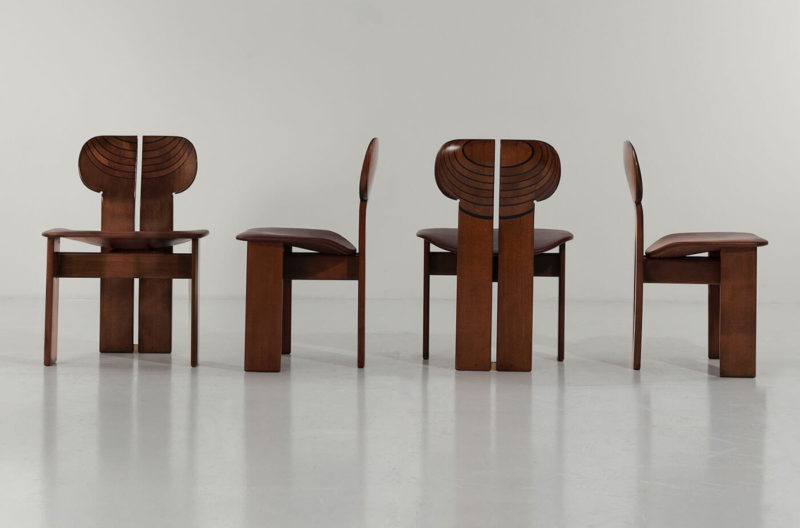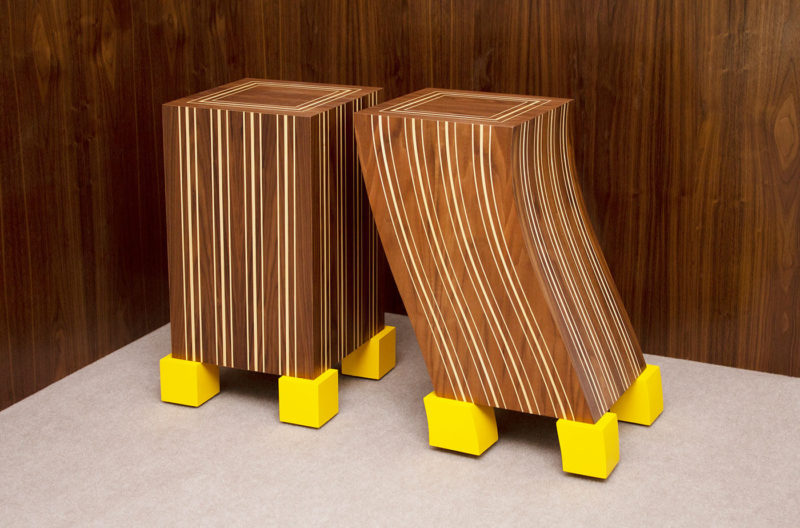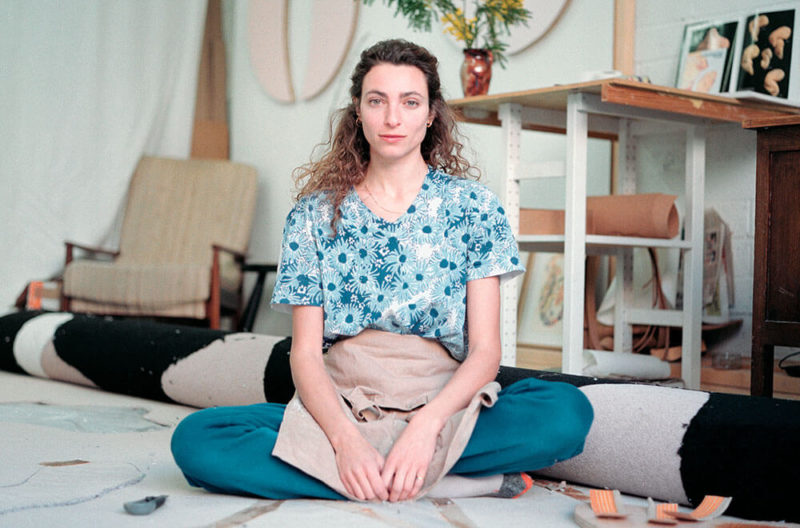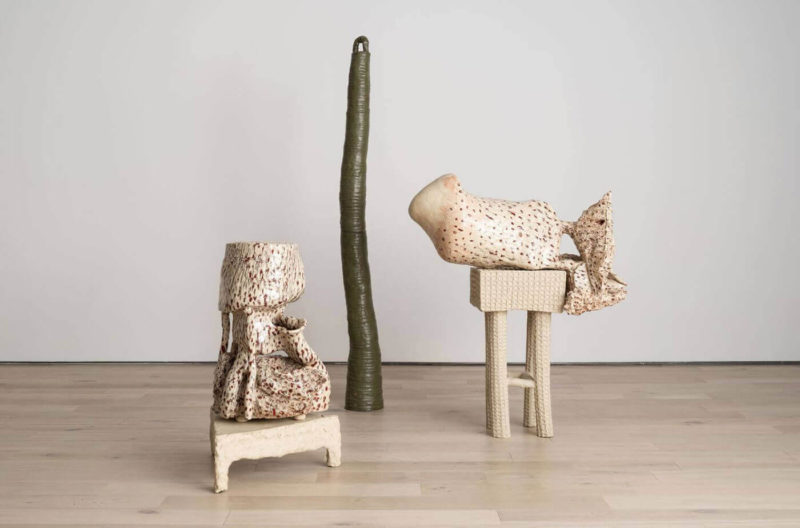FAINA: Stepping on Ukrainian Soil
Awarded best stand in the Curio section of emerging exhibitors at Design Miami/ Basel for its installation ‘Stepping on Ukrainian soil’.
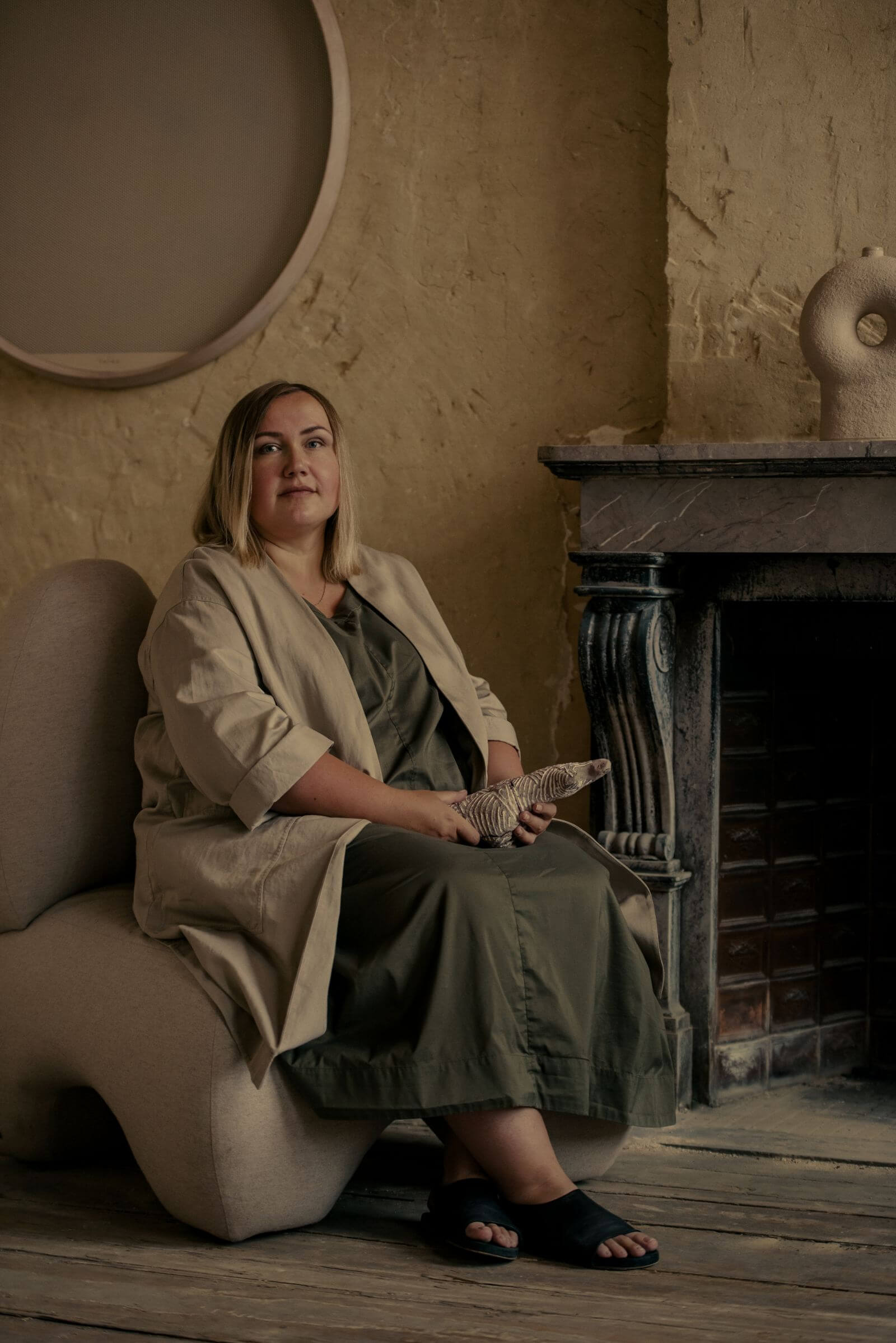
Victoria Yakusha
COURTESY: FAINA Gallery
“I WAS IN Belgium when the [Russia-Ukraine] war started and felt this physical pull to our soil and our land,” says Victoria Yakusha, founder of FAINA Gallery a Ukrainian design studio. “Ukraine is known for its black soil, it’s the richest soil in the world, and a lot of our pieces are made in black to show this connection to our earth. People don’t want to leave the country because it’s our land.”
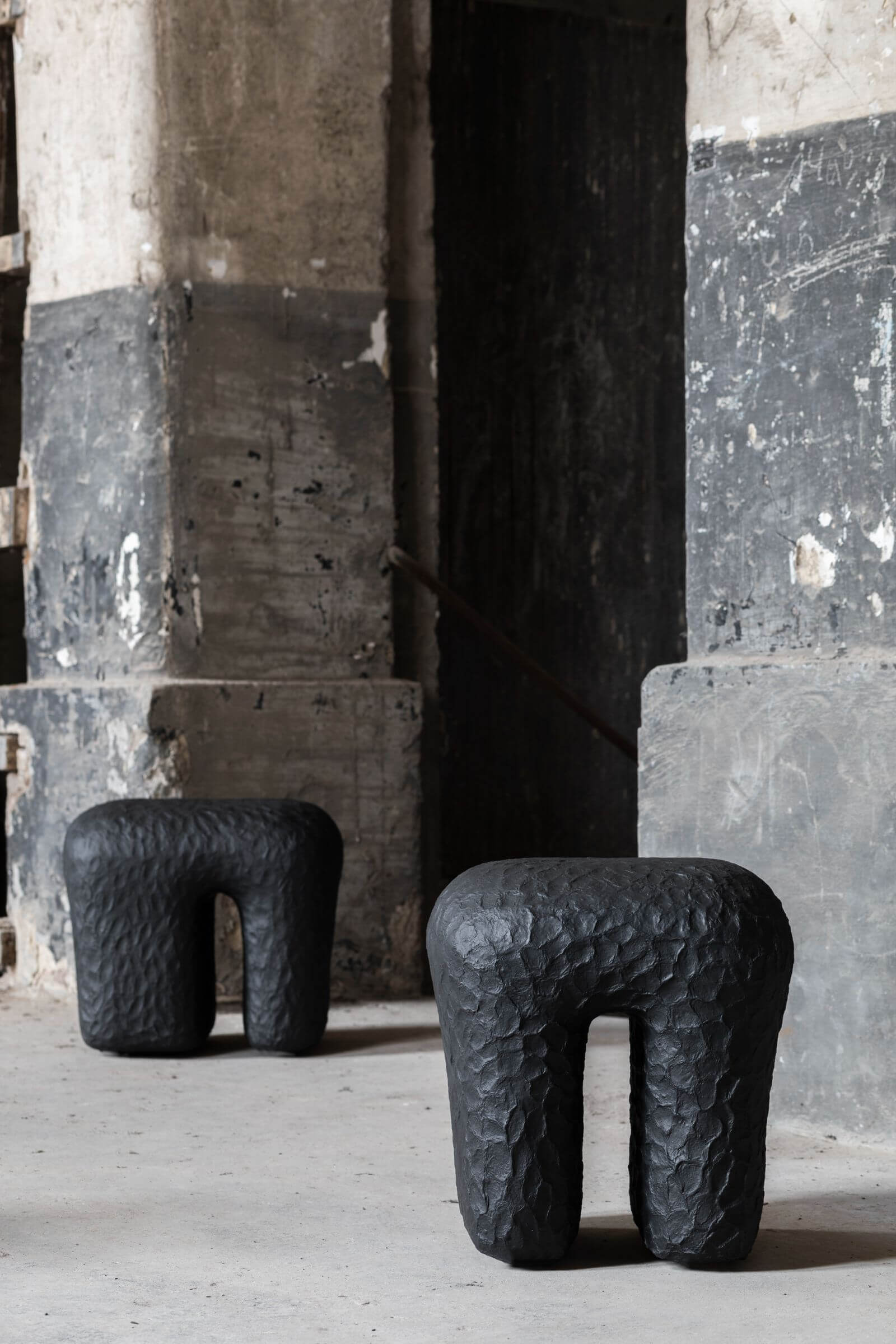
FAINA, ‘Duzhyi’ stools, 2022
COURTESY: FAINA Gallery / PHOTOGRAPH: Tijs Vervecken
FAINA Gallery has just been awarded best stand in the Curio section of emerging exhibitors at Design Miami/ Basel for its installation ‘Stepping on Ukrainian soil’. On view is a variety of work made during wartime that is inspired by the relationship Ukrainians have with their land.
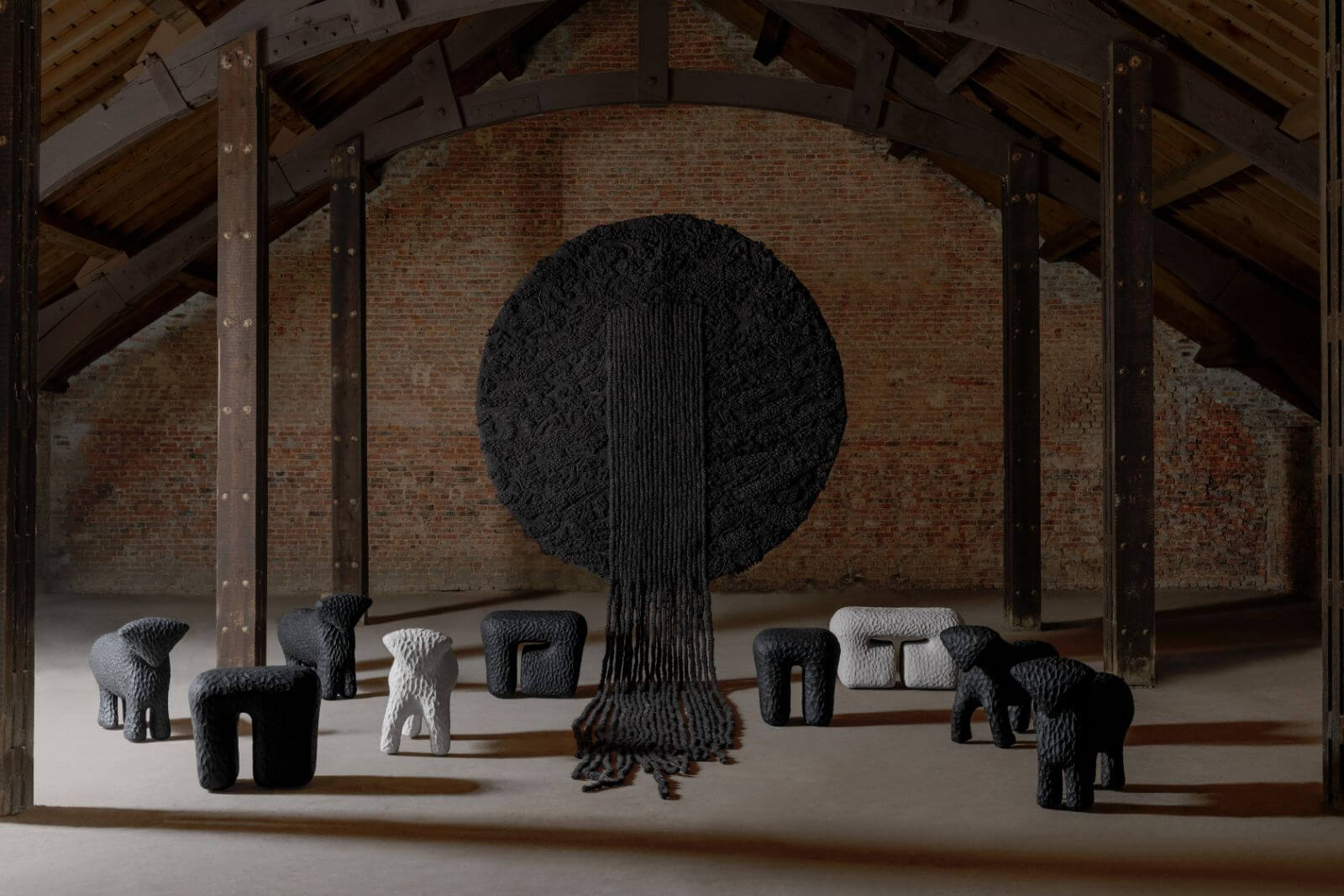
Installation view, FAINA at Design Miami/ Basel 2022
COURTESY: FAINA Gallery / PHOTOGRAPH: Tijs Vervecken
A huge, handwoven circular tapestry hangs on the wall. Titled ‘Zemlia’ (Ukrainian for ‘earth’), it has a richly layered, tufty texture and a central band of vertical lines, the long strands cascading onto the floor. “It’s an embodiment of Ukrainian soil,” Yakusha says of the tapestry made in the Carpathians, a mountainous region of western Ukraine. It was realised using a centuries-old technique, passed down from mother to daughter, that is dying out.
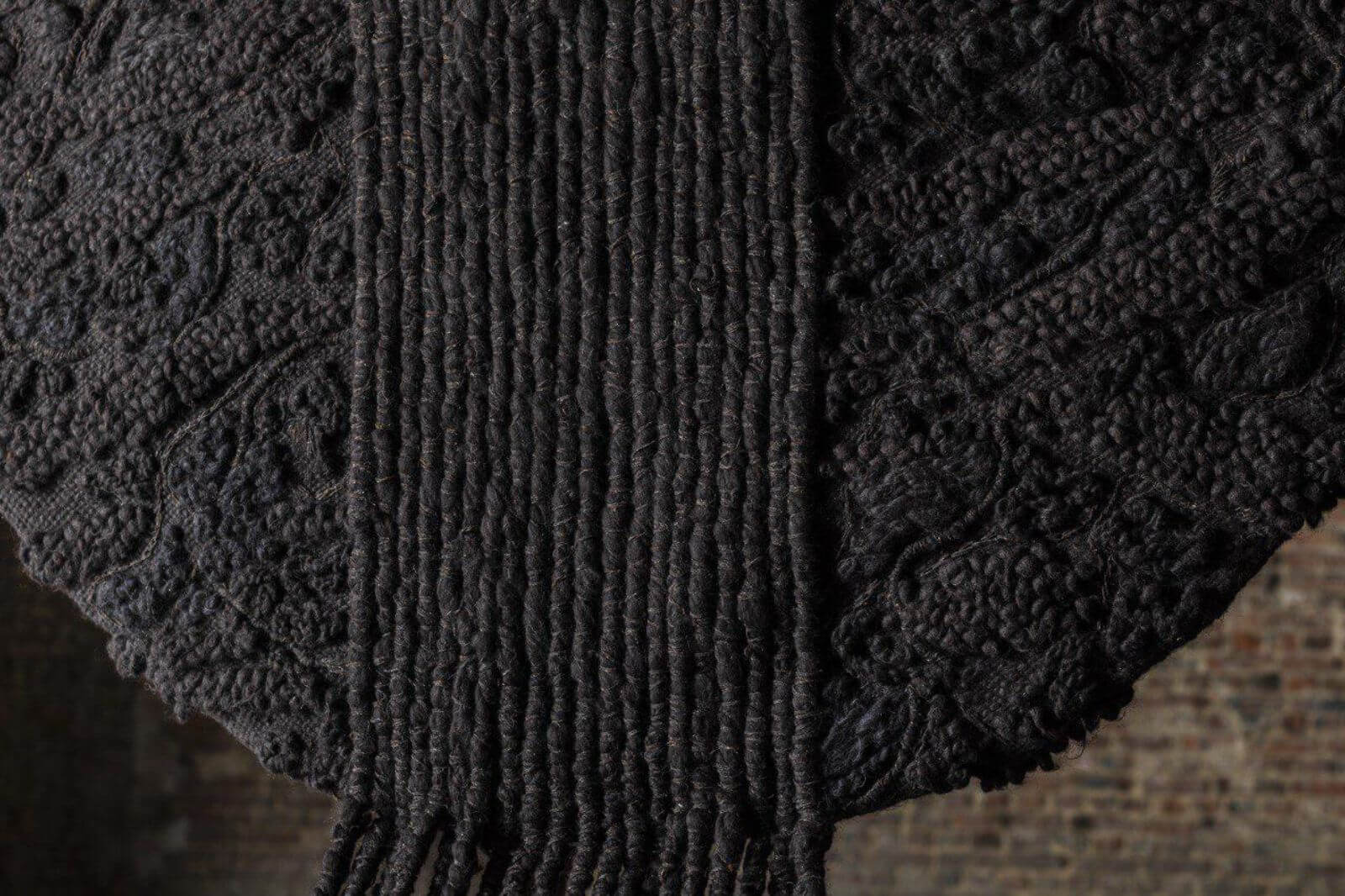
FAINA, ‘Zemlia’, 2022
COURTESY: FAINA Gallery
In front of the tapestry are several black and white ‘Volyky’ benches, the title derived from the Ukrainian word for freedom, that resemble sheep, as well as ‘Duzhyi’ stools. Drawing on the naive and primitive aspects of Ukrainian art, they have been hand-sculpted and kneaded using a sustainable material that FAINA developed. Bearing the imprint of the maker’s fingertips, the surface of the material is irregular, rendering each piece unique. The craftsmanship employed recalls how indigenous dwellings were traditionally made.
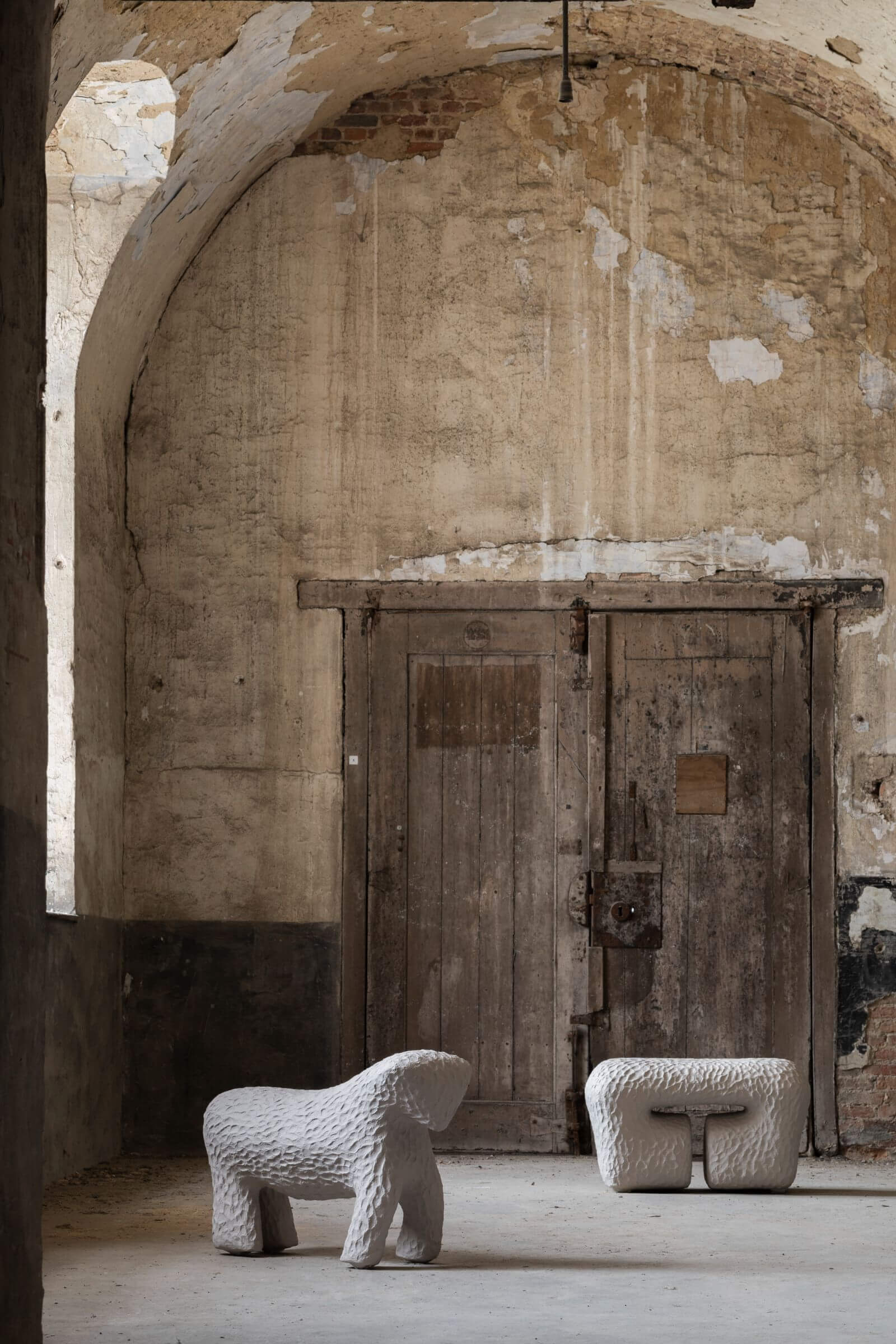
FAINA, ‘Volyk’ bench and ‘Duzhyi’ stool, 2022
COURTESY: FAINA Gallery / PHOTOGRAPH: Tijs Vervecken
Yakusha, who trained in architecture, founded FAINA in Brussels in 2014, after moving to Belgium to give birth to her first child. “2014 was the moment when Russia’s aggression towards Ukraine began and we started asking ourselves ‘Who are we?’,” Yakusha recalls. “We felt that we’re different [from the Russians] and were looking for something that was ours,” she adds, referring to how she sought to imbue FAINA with a Ukrainian identity.
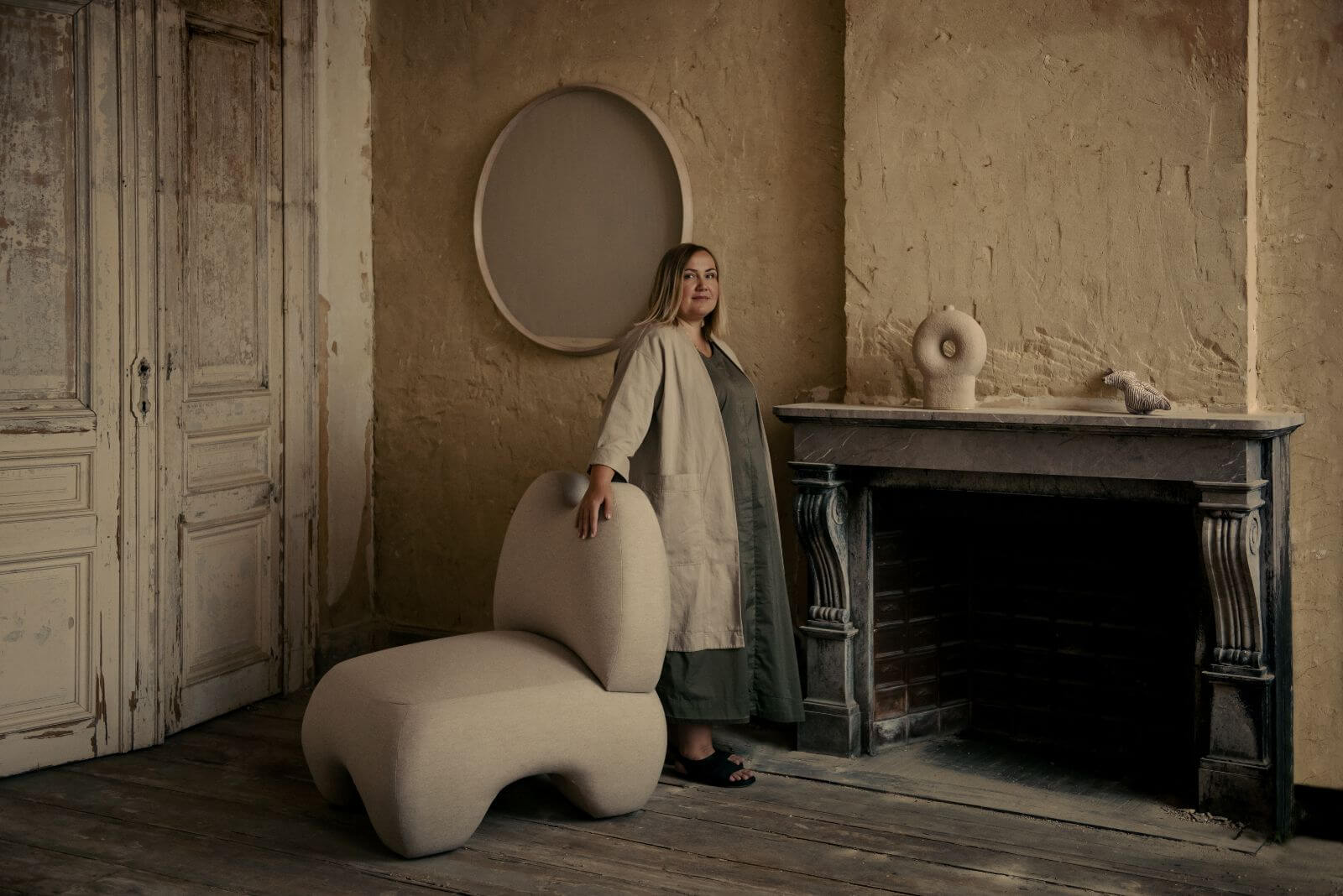
Victoria Yakusha
COURTESY: FAINA Gallery
Besides making objects and lighting reflecting upon Ukrainian culture, the studio takes on architecture commissions for interiors and ecological complexes. Last November, FAINA opened its first boutique in Antwerp – Yakusha likes the city’s niche, underground design scene – and in May it participated in COLLECTIBLE fair in Brussels. All the works on display were in black and white, including outsized lamps inspired by sunflowers. “Sunflowers are a symbol of our land and the central motif for winter solstice,” Yakusha says.
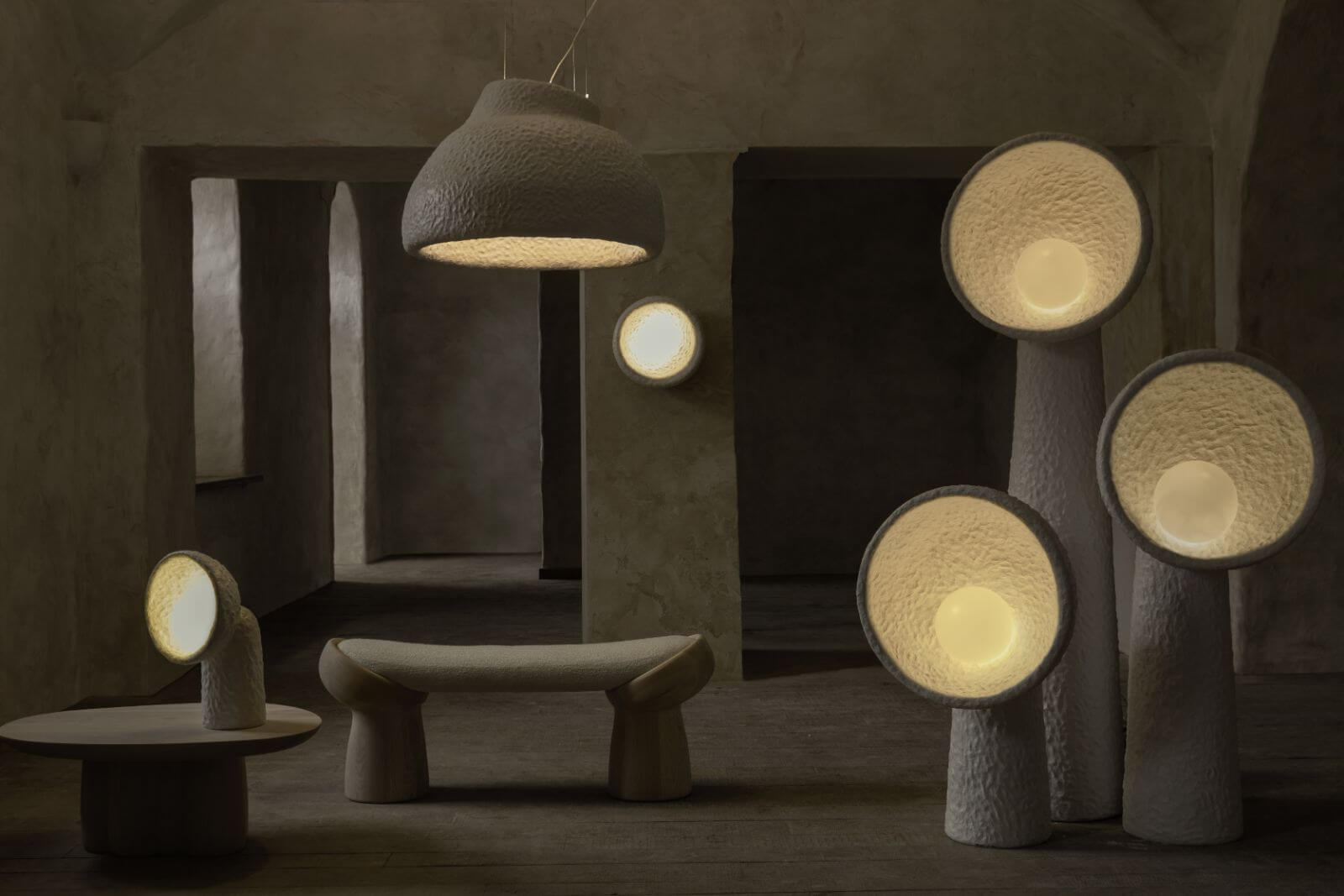
FAINA, ‘Soniah’ collection. 2020
COURTESY: FAINA Gallery
The invitation to participate in Design Miami/ Basel arose in January prior to the Russian invasion. Yakusha had to change the concept of FAINA’s booth as some of its production sites had closed during the war. “We had to relocate production to safer regions in western Ukraine, where our tapestry-making was already based,” Yakusha explains.
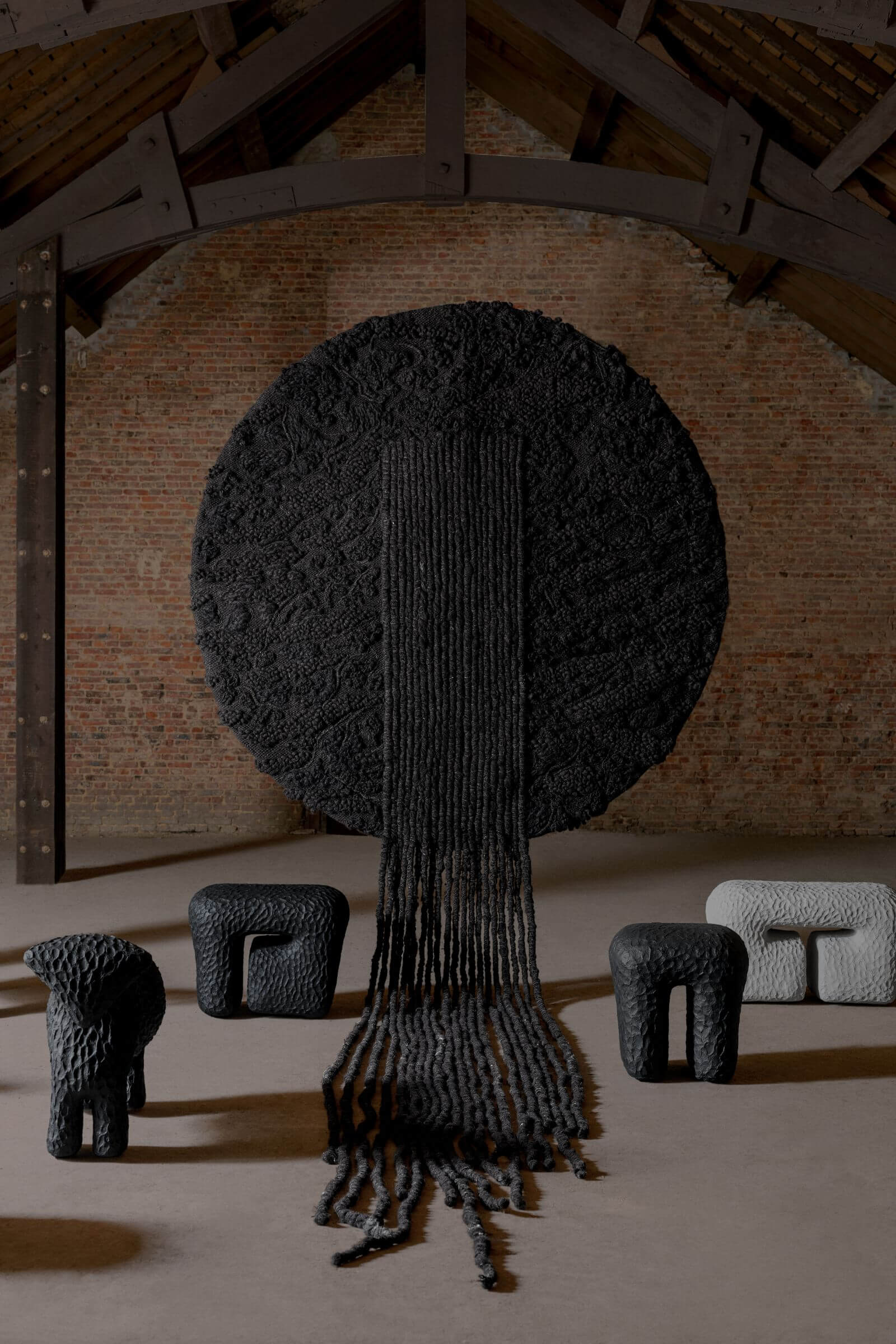
Installation view, FAINA at Design Miami/ Basel 2022
COURTESY: FAINA Gallery / PHOTOGRAPH: Tijs Vervecken
Arranging production and transportation was no mean feat. With a touch of relief, Yakusha says, smiling, “We’re honoured to represent Ukrainian design at Design Miami/ Basel.”




